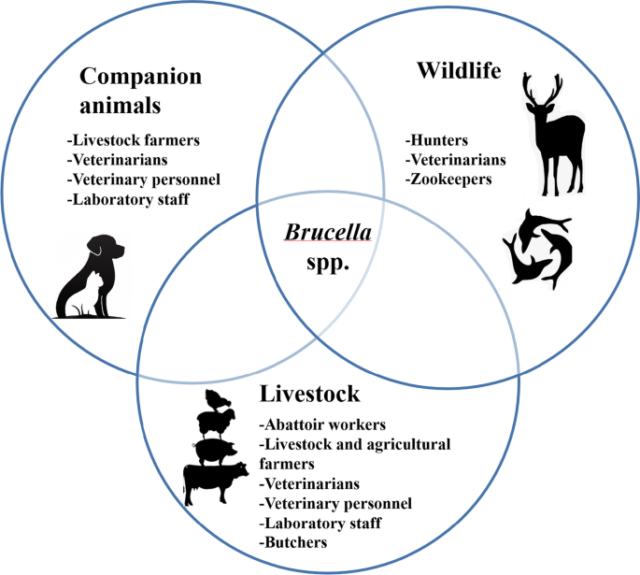
Radha Rani Sawami1*, Vaishali Pareek2, Nitesh Jat3, Anju Kumari4,Yashmita Shekhawat5
1Department of Animal Genetics and Breeding, College of Veterinary and Animal Science, Bikaner, RAJUVAS
*Corresponding author: radharani7737156601@gmail.com
All around the world, brucellosis is a disease that needs to be reported. A number of Brucella species, which primarily affect cattle, swine, goats, sheep, and dogs, are responsible for the bacterial disease brucellosis. Humans typically acquire the disease through direct contact with infected animals, consuming contaminated animal products, inhaling airborne agents, or all three of these methods. Consuming unpasteurized milk or cheese from infected goats or sheep is the primary cause of the majority of cases.
Brucellosis is one of the most common zoonoses spread by animals, which in endemic regions poses a serious threat to the general public’s health.
The bacterium is confined to the udder tissues in female animals and is then eliminated through milk. Farmers, veterinarians, abattoir employees, lab staff, and other individuals who work with animals and use their products run the risk of acquiring infections.
Human brucellosis prevalence is influenced by a number of variables, including dietary practices, how milk and milk products are processed, animal husbandry methods, and environmental hygiene.
Symptoms of brucellosis
Signs and symptoms are similar to those of the flu and include:
- Fever
- Chills
- Loss of appetite
- Sweats
- Weakness
- Fatigue
- Joint, muscle and back pain
- Headache
The symptoms of brucellosis might go away for a few weeks or months before coming back. Even after receiving treatment, some people with brucellosis have persistent symptoms that last for years. Long-term symptoms and signs may include:
- Fatigue
- Recurrent fevers
- Inflammation of the inner lining of the heart chambers (endocarditis)
- Joint inflammation (arthritis)
- Arthritis of the spinal bones (spondylitis)
- Arthritis of joints where the spine and pelvis connect (sacroiliitis)
Prevention
To reduce the risk of getting brucellosis, take these precautions:
Avoid unpasteurized dairy foods.
Cook meat thoroughly
Wear gloves.
Take safety precautions in high-risk workplaces.
Vaccinate domestic animals.
References
https://www.ncbi.nlm.nih.gov/pmc/articles/PMC2931433/
https://www.who.int/news-room/fact
https://www.mayoclinic.org/diseases-conditions/brucellosis/symptoms causes/syc-20351738

















